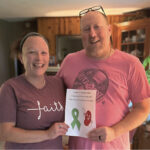Don’t worry, you will not get warts, despite the classic myth that the bumps on a frog are contagious! The common skin wart, which resembles a cauliflower or solid blister, is actually caused by a virus. Human papillomavirus (HPV) causes warts by invading small cuts or scratches on the fingers, hands and feet. It can take up to six months after exposure to HPV for a wart to appear.
Kids and young people tend to get warts more often than adults. In particular, kids with eczema who frequently scratch and leave breaks in their skin, nail biters and kids who pick their hangnails seem to get warts more often. Touching a wart does not mean you will automatically get one, too, but warts are spread by close contact. Skin softened by water tends to be more vulnerable to infection, as HPV likes warm, moist environments. Kids typically pick up HPV by touching something a person with a wart has used, like a towel or shower floor.
Skin warts can occur in different places. Common skin warts are typically seen on fingers, hands, knees and elbows. Plantar warts are found on the soles of the feet. Flat warts are smoother than other warts, with flat tops and a pink, light brown or yellow color. Kids typically get them on their faces, hands and knees. Some warts are sexually transmitted. A child with warts on the genitals or rectum should see a doctor.
For most people, a wart is just mildly bothersome. Treatment is not always necessary, and in two-thirds of cases, skin warts resolve on their own within two years. During this time period, the wart may continue to enlarge and new warts may appear. I typically see children in the office when the warts are cosmetically bothersome or painful.
Several different treatments are available for warts, depending on the size and location. Most of these treatments work by destruction of the infected skin, so they must be applied carefully to avoid irritating healthy skin. Salicylic acid preparations are available over the counter and by prescription, depending on their strength. They can be applied directly to the wart. They come as liquids that can be “painted” on and as pre-medicated patches applied like Band-Aids. Cryotherapy involves freezing the wart. Over-the-counter kits are available for this. Many doctors’ offices use liquid nitrogen to freeze warts, though young children may not tolerate this as well. Duct tape applied to warts has also been shown to speed resolution, and, in some cases, I will recommend this along with one of the other treatments. Laser treatments and prescription creams are available for certain recalcitrant warts.
In between treatments, the dead skin from the wart should be filed off with a nail file or pumice stone. It is important to understand that multiple treatments may be required to remove a wart completely. Even when the wart falls off, the skin underneath may still contain virus particles, allowing the wart to recur.
You should speak to your child’s doctor before attempting over-the-counter wart remedies on an infant or young child. Again, your child’s doctor should be seen for warts on the genitals or rectum. Warts on the face, where scarring is more of a concern, should be seen by a physician prior to treatment. Warts that become painful, red and swollen and bleed should also be evaluated by a medical provider.
You can reduce the chance your child will develop warts by encouraging good hand washing and maintaining a treatment regimen in children with eczema. Flip-flops or water shoes should be worn at public pools and locker rooms to reduce exposure as well. Though bothersome, most warts are harmless and will resolve in time. If you kiss that frog, who knows? You might just get a prince!






